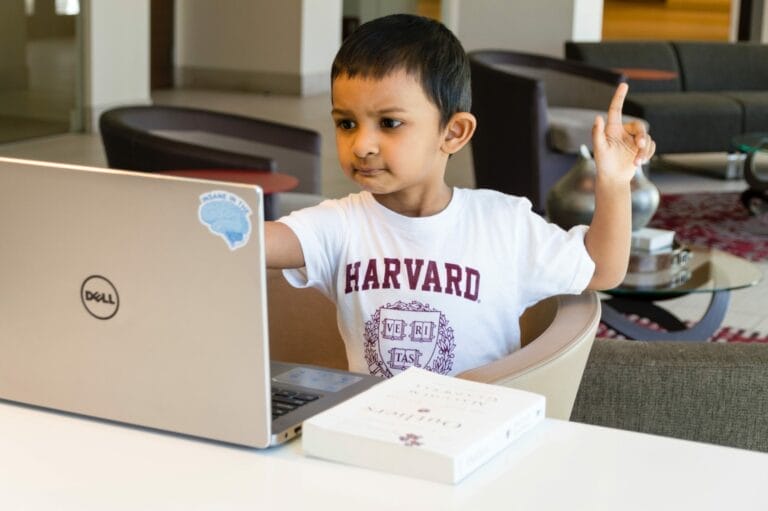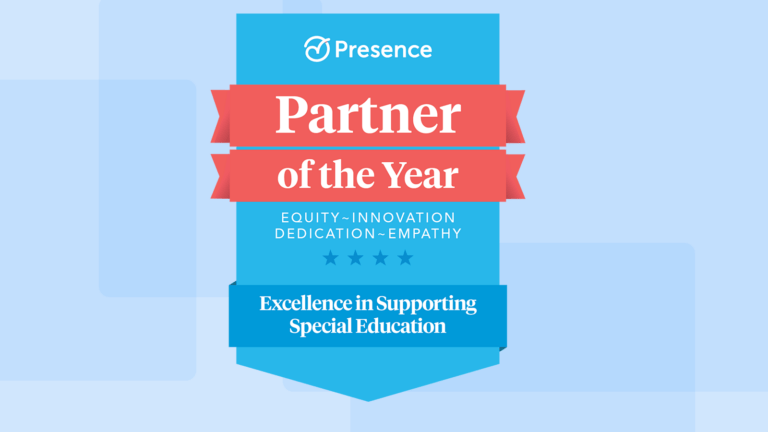
The Learning Triangle
The only way a school system can truly excel is if the three main components are working in harmony, and each is holding up their end; after all, the triangle is the strongest geometric shape.
If the teacher, student, and parent are all working together, the results will be outstanding. Once this “triangle of trust” has been established, the potential to grow continues to grow even stronger.
The Role of Teachers
While the teacher’s primary focus and responsibility is the students, it would be a mistake for a teacher to define his/her role in such narrow terms. For teachers to help students reach their potential, a healthy relationship with the parents is beneficial, and frequently the critical ingredient that will enhance the student’s chances of success.
Teachers need to share their goals with the parents so they can work in tandem to achieve them. And they need to reach out to parents early in the year before there are problems. This outreach sends the message to the parents that the teacher cares about the students, and lays the foundation for future communication with parents.
The Role of Students
Students must accept that they are ultimately responsible for their education. No one can force them to do anything. It is up to the parents and teachers to support and encourage, not to carry the child’s load. Some students tend to put the adults in their lives against each other, but once they see that there is communication between parents and teachers, they will feel supported and most likely perform better.
The Role of Parents
Together with teachers, parents serve as the base of the triangle, securely supporting the student. Parents must feel comfortable enough to contact their child’s teacher if there is a concern. And at times, they will be called upon to become even more proactive in their children’s education, serving other functions as well to ensure that that their children derive maximum benefit from the education being provided by the school.
Hybrid Education Model
The Learning Triangle, while always essential, has become even more critical in the world redefined by COVID-19. As a result of the ongoing pandemic, most schools across the country seem to be looking at another year of distance learning, while a few brave school systems have declared their students will return to in-person school.
Still, others are working hard to offer students a mix of the two by creating a hybrid learning model. That’s an arrangement where students attend school a few days each week and engage in distance learning on the other days.
Both face-to-face and online learning have their benefits and weaknesses. The goal of hybrid learning is to combine the two formats to create a singular learning experience without weak spots.
If done correctly, a hybrid learning scenario can be beneficial for everyone involved. Aside from the importance of in-person learning for kids, the opportunity to develop social and emotional skills, get physical exercise, and have access to mental health support, regular meals, internet access, and counseling; another significant benefit of the hybrid model is the long-awaited socialization the kids will get.
Although “blended courses and “hybrid courses” are used interchangeably, there is an essential difference.
A blended course involves face-to-face class sessions accompanied by online materials and activities – primarily a “blend” of both live and online learning. A fundamental component of a blended course is that these online materials are not intended to “replace” face-to-face class time; instead, they are meant to be supplemental.
On the other hand, hybrid learning is intended to replace a portion of face-to-face class time. In the hybrid synchronous model, which will be employed in most schools, students interact online in real-time via Zoom or similar real-time meeting platforms. Hybrid learning will impact all three points on the entire Learning Triangle, in different and unique ways.
Click the link to move directly to your area of interest
Impact on Teachers
Leading a successful hybrid learning experience requires a different set of strategies than working strictly remotely or strictly face-to-face.
Focus on Well-Being and Relationships
Researcher Jon Eckert and his colleagues at Baylor University convened school leaders from across the world in virtual discussions throughout the spring and into the summer. They found three focus themes for school systems to consider in the upended COVID-19 environment: well-being, engagement, and feedback.
Before any meaningful learning takes place, Eckert writes, Maslow’s hierarchy — the idea that physical, mental, emotional, social, and spiritual well-being must be taken care of before meaningful learning can occur — is paramount. During the pandemic, the upheaval in families’ and students’ lives affects all of these basic needs. School leaders and teachers must do their best to focus on well-being and positive relationships — even more than usual.
Different Modes, Different Strategies
Teachers must consider which types of activities are best suited for online vs. in-person learning in a hybrid environment. According to reporting by Education Week, the following strategies are best suited to each learning mode:
Activities for the Classroom
- Interactive discussions and hands-on lessons
- Lab or science work that needs supervision
- One-on-one instruction time for vulnerable students
- Well-being check-ins
Activities for Remote Learning
- Viewing lecture materials in a presentation or video format where students can learn at their own pace
- Independent work like worksheets, reading, and writing
- Elective, remedial, or advanced work
Consistent Communication
There’s no doubt that the barrage of school-related digital communications ushered in by COVID-19 has been tricky for all to navigate. University of Cincinnati educators Katie Hicks and Sarah Schroeder provide the following ideas to ensure that we aren’t scrambling to stay in touch with students and families:
- Reflect and write out a communication plan.
- Keep communication consistent and follow through!
- Try texting services like Remind or Group Me, and keep messages short and sweet. Many students and families will receive smartphone communication more consistently and quickly than email.
Don’t Overwhelm Students with Tech Tools
Teachers need to be mindful of not overwhelming students with technology tools during hybrid instruction. Of course, millions of students are at least somewhat familiar with the basics like Google Classroom, Zoom, or Seesaw. However, it could be overwhelming for students if they have teachers experimenting with different tools beyond the basics.
Hybrid Learning and the Teacher’s Role in the Learning Triangle
Hybrid learning will require teachers to modify their objectives, approach, and instruction to accommodate the new reality and be of most benefit to their students. Their success in these and other areas will directly impact their irreplaceable contribution to the Learning Triangle.
Impact on Students
How will students maximize their benefit from hybrid learning? More specifically, what are some of the critical components of a high-functioning hybrid learning environment that will maximize students’ benefits?
There are primarily four areas that will change for students in the hybrid classroom.
A Learning Management System (LMS)
A robust LMS is the backbone of a hybrid learning environment. It provides a location-independent place for individualized student assignments, instructional resources, assessments, links to online curricula, and a hub for student-teacher interactions and student collaborations.
Though the LMS is especially vital for the days when students are working away from the classroom, it will afford the most significant benefit if fully used for students’ in-class days as well. Additionally, the LMS offers parents the ability to keep tabs on their students’ progress, grades, and deadlines.
Individualized Learning
One of the advantages of hybrid learning is that it allows teachers to better individualize their instruction for each student. Since teachers will be working in class with only half of their students at a time, they can better focus on each student’s needs and learning goals, and then use the LMS to provide lessons and assignments personalized to each student.
Project-Based Learning (PBL)
When teaching and learning are more individualized, the possibilities increase for students to work on projects they self-select with their teachers’ consultation. This is especially true when students work half-time from home, without the time and space constraints of their classrooms. The opportunities afforded by a hybrid learning environment facilitate PBL.
Teacher-Created Videos
For teachers who use lectures or mini-lessons as part of their instruction, video recording these lessons and posting them serves two functions: They allow students to view them at their own pace, both at school and at home; and they free up class time otherwise devoted to these lectures, letting the teacher work with students individually or in small groups. Simple teacher-created videos recorded on a computer or smartphone are an excellent fit for hybrid learning.
Hybrid Learning and the Student’s Role in the Learning Triangle
Because children will be given more freedom and opportunities for creative learning in the hybrid model, it can be expected that they will be compelled to assume more responsibility for their education, a key to fulfilling their role in the Learning Triangle. As a consequence, perhaps this satisfaction from substantial growth will reduce their need to play the adults in their lives against each other.
Impact on Parents
Parents can have a significant influence on their child’s learning and development. Decades of research support the reality that students are better equipped and more likely to succeed academically when they feel connected to the adults at school. The relationships between parent and teacher influence student connectedness.
Streamlining and enhancing parent-teacher interactions can result in students feeling cared about and, therefore, more inclined to meet high learning and behavior expectations. Hybrid learning has put those interactions center-stage and has never been more critical for the continuity of learning across all settings.
This school year, parents will take on multiple roles to meet their children’s needs: Organizer, Instructor, Motivator, and Manager.
Organizer
As an organizer, the parent plans the student’s daily schedule, organizes lesson plans and activities, and ensures all materials needed are in order. This includes creating a daily plan for the child, setting up the learning space free of distractions, and helping with the school’s communication and digital tools.
Instructor
As an instructor, the parent provides one-on-one instruction and subject tutoring when necessary, doing what is essential to support learning. It is vital to resist the temptation to do the work for the child. It is more beneficial to help the child understand by identifying barriers while giving the student as much control as possible. This will increase both engagement and learning.
Motivator
As a motivator, the parent motivates the child to progress and work through problems independently. It is crucial to encourage self-direction so that the student owns his/her learning. At the same time, the parent must remain flexible and realize that home learning cannot mimic school learning; it is less structured, but more open to individualization.
Manager
As a manager, the parent keeps track of student progress and manages their time/schedule. This includes ensuring that all work is completed promptly and keeping the child accountable. Also, the parent needs to help the child build a learning network of peers with whom to collaborate.
Hybrid Learning and the Parent’s Role in the Learning Triangle
Because parents will become proactive in their children’s education in hybrid learning, their role in the triangle will become even more critical. Many will morph from supporting their children’s teachers to becoming a full-fledged partner. For many students, this bodes well for enhanced success.
The Bottom Line: Maximizing Student Engagement
Aside from the practical considerations pushing schools to the hybrid model, the objective of any hybrid model must be to maximize student engagement. If adequately implemented, teachers can become more connected and aware of each student, and students can become more aware of their learning and take greater responsibility for it. And parents can serve as the “glue” to keep it all connected.
In this way, hybrid learning need not be merely the best of undesirable options, but rather the opportunity to bring the Learning Triangle to a new paradigm, providing everyone in that triangle — teacher, student, and parent — new and exciting opportunities to realize the ultimate goal of all education, to facilitate the growth and development of our precious children.



